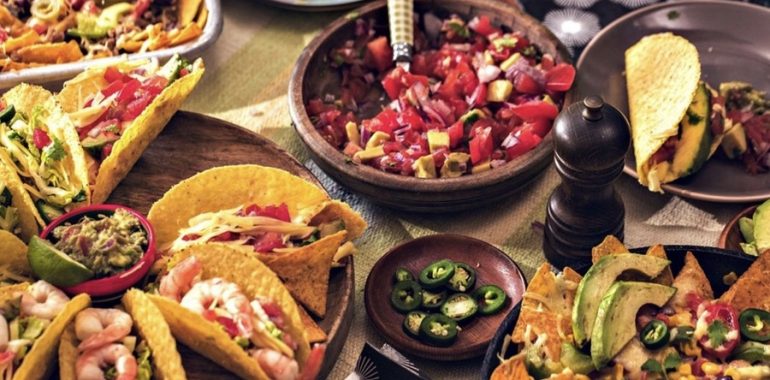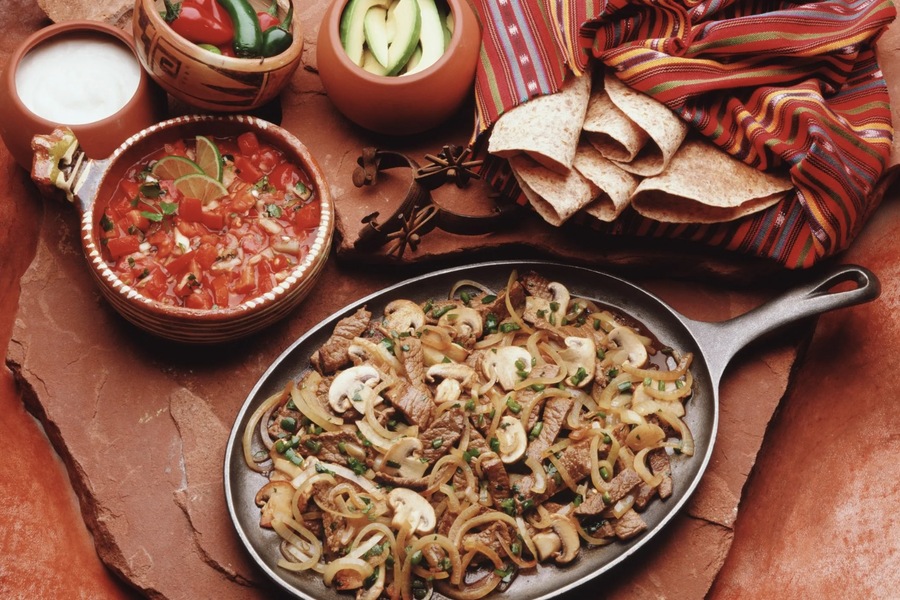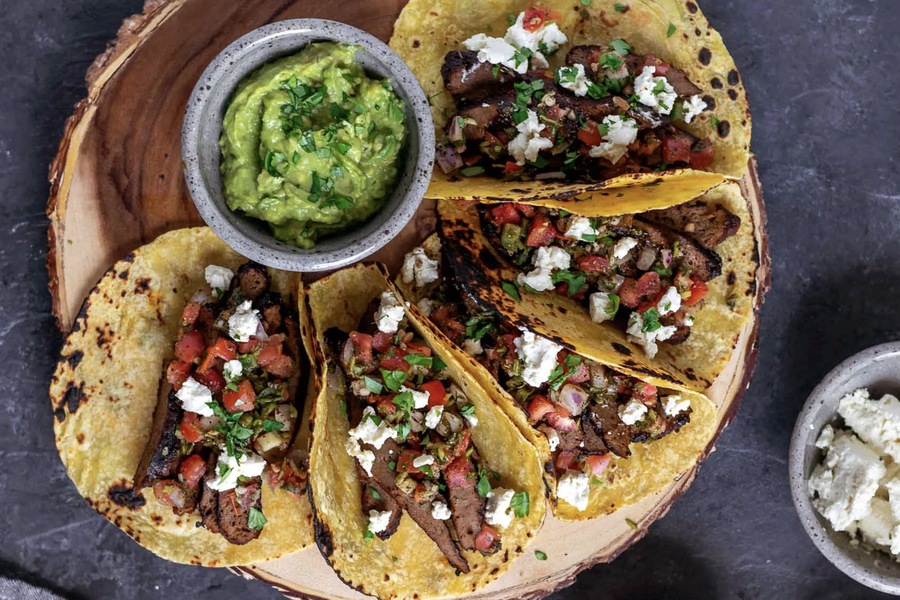The Rich and Diverse World of Mexican Cuisine

Mexican cuisine is renowned for its vibrant flavors, rich history, and the use of a variety of fresh ingredients. It’s a culinary tradition shaped by the convergence of indigenous cultures and European influences, particularly after the Spanish invasion. Mexican dishes often rely on staples like grains, beans, rice, and meats, all seasoned with an abundance of red peppers, herbs, spices, tomatoes, and even cactus. This unique blend of ingredients and techniques creates the robust and diverse flavors that define Mexican cuisine today, making it the best bar none when it comes to rich culinary traditions that have stood the test of time.
Page Content
A Brief History: From Aztec to Modern Mexican Cuisine
The roots of Mexican cuisine can be traced back to the Aztec civilization, who were experts in agriculture and developed ingenious methods to cultivate their food. One of the most notable innovations was the creation of chinampas, or artificial islands, which allowed them to grow a variety of grains, vegetables, and plants like corn, beans, and chili. These crops became fundamental to their diet and remain essential in Mexican cuisine today.
When the Spanish arrived in the 16th century, they introduced a wealth of new ingredients that further enriched the culinary landscape. Europeans brought livestock such as cattle, poultry, pigs, goats, and sheep, as well as olive oil, wine, and spices. This fusion of indigenous and European ingredients resulted in a cuisine that reflects the complex history and culture of Mexico.
Today, Mexican cuisine has a global reach and can be found far beyond Mexico’s borders. From fine dining restaurants to street food vendors, Mexican dishes are enjoyed worldwide, making it an integral part of international culinary culture. Dishes like burritos, tacos, and tamales are popular street foods that carry with them centuries of history from ancient civilizations like the Aztecs and Mayans.
Core Ingredients of Mexican Cuisine
1. Meat
Before the arrival of Europeans, indigenous peoples of Mexico relied on the meat of wild birds, rabbits, armadillos, snakes, and even lizards. While these traditional recipes are still enjoyed today, modern Mexican cuisine heavily features pork, beef, and chicken—meats that were introduced by the Spanish. Popular cooking techniques include grilling, smoking, and slow simmering, which enhances the rich flavors of the meat.
2. Chili Pepper
Chili peppers have been a part of Mexican cuisine since the time of the Mayans and Aztecs. This fiery fruit is a hallmark of Mexican dishes, added either fresh, dried, or smoked. Chili peppers range in heat and flavor, with varieties like jalapeños—known for their mild heat and fruity flavor—and habaneros, which are among the hottest peppers and possess a distinct floral aroma. The chili, whose name originates from the Aztec word for “red,” has become synonymous with Mexican cuisine.
3. Corn
Corn is the backbone of Mexican cuisine. From this ancient grain, Mexicans produce masa, a dough made from corn that forms the base for many iconic dishes like tortillas and tamales. Corn is versatile, used in a variety of ways including being boiled, fried, or ground into flour for different recipes. It also plays a central role in Mexican desserts, beverages, and side dishes.
4. Legumes
Beans, particularly black beans, have been cultivated in Mexico since ancient times. Today, Mexicans also use chickpeas and lentils, which were introduced by the Spanish. Beans are often used as fillings for tortillas, served as side dishes, or even as standalone meals.
5. Avocado
The avocado, cultivated by the Aztecs as early as the third millennium BC, is one of Mexico’s most famous exports. This nutrient-rich fruit is used to make guacamole, a popular Mexican sauce, and can also be found in soups, salads, and various appetizers.
6. Lime
Lime is an essential seasoning in Mexican cuisine. Its juice adds a zesty freshness to everything from salsas to marinades for meat, fish, and seafood. The acidic punch of lime is a signature flavor that brightens the taste of many dishes.

Traditional Mexican Flatbreads
1. Tortilla
The tortilla is perhaps the most iconic of all Mexican flatbreads. Made from masa, tortillas are thin, pliable, and serve as the foundation for dishes like tacos, burritos, and quesadillas.
2. Tostada
A tostada is a crispy, fried tortilla often topped with refried beans, shredded meat, lettuce, cheese, and salsa. It’s a crunchy alternative to the soft tortilla and adds texture to various dishes.
3. Totopos Tostaditas
These are small, fried tortillas, similar to nacho chips, often served with dips like guacamole or salsa. They are a popular appetizer and snack in Mexican cuisine.
4. Gorditas
Gorditas are thicker than tortillas and stuffed with fillings like cheese, meats, or beans. They can be fried or grilled and are a hearty, satisfying dish often enjoyed as a snack or meal.
Popular Mexican Snacks and Appetizers
1. Nachos
A beloved snack worldwide, nachos consist of fried tortilla chips topped with melted cheese, beans, jalapeños, and often additional toppings like salsa, sour cream, and guacamole.
2. Chicharron
This crunchy, fried pork skin is a popular snack in Mexico. Chicharron can be eaten alone or added to dishes for an extra layer of texture and flavor.
3. Chorizo
Chorizo is a spicy pork sausage seasoned with chili peppers and garlic. It’s used in a variety of Mexican dishes, from tacos to stews, adding a rich, savory depth.
4. Elotes
Elotes are Mexican street food staples, consisting of grilled corn on the cob slathered in mayonnaise, cheese, chili powder, and lime juice. They are a favorite snack across Mexico.
5. Ceviche
Ceviche is a refreshing dish made from raw fish marinated in lime juice, mixed with tomatoes, onions, and cilantro. This light and zesty appetizer is especially popular in coastal regions.

Mexican Sauces
1. Salsa
Salsa is the quintessential Mexican sauce, made from tomatoes, onions, chilies, and cilantro. It comes in many varieties, from mild to spicy, and is served with everything from tortilla chips to grilled meats.
2. Guacamole
This creamy, avocado-based sauce is a Mexican classic. Guacamole is often flavored with lime juice, garlic, onions, and cilantro, and served as a dip or spread.
The Global Reach of Mexican Cuisine
The simplicity, heartiness, and spice of Mexican cuisine have made it a worldwide favorite. Today, you can experience the vibrant flavors of Mexico in restaurants and street food stalls across the globe. Mexican cuisine has even inspired popular fast foods, with dishes like burritos, tacos, and quesadillas becoming staples in many countries.
It’s no surprise that in 2010, UNESCO recognized Mexican cuisine as an intangible cultural heritage of humanity. This prestigious designation acknowledges the deep cultural significance of Mexico’s culinary traditions, which continue to inspire and delight people everywhere.